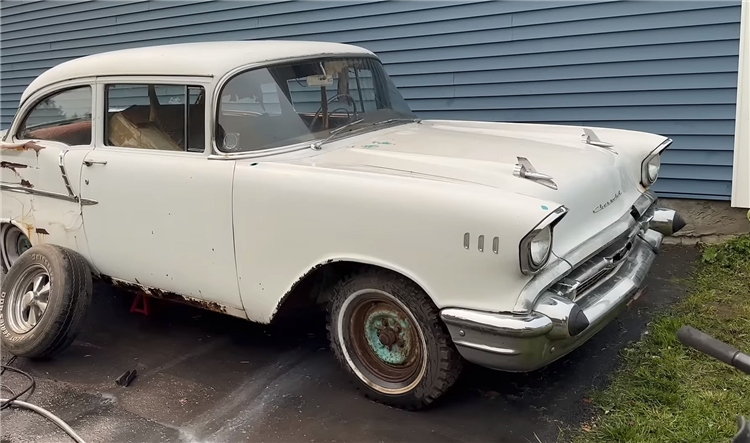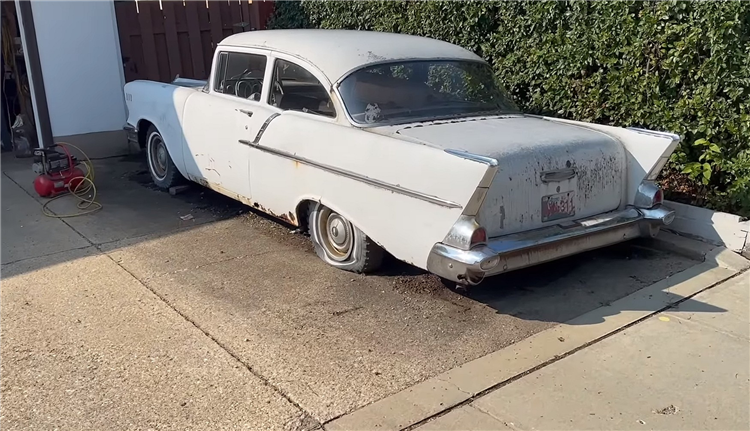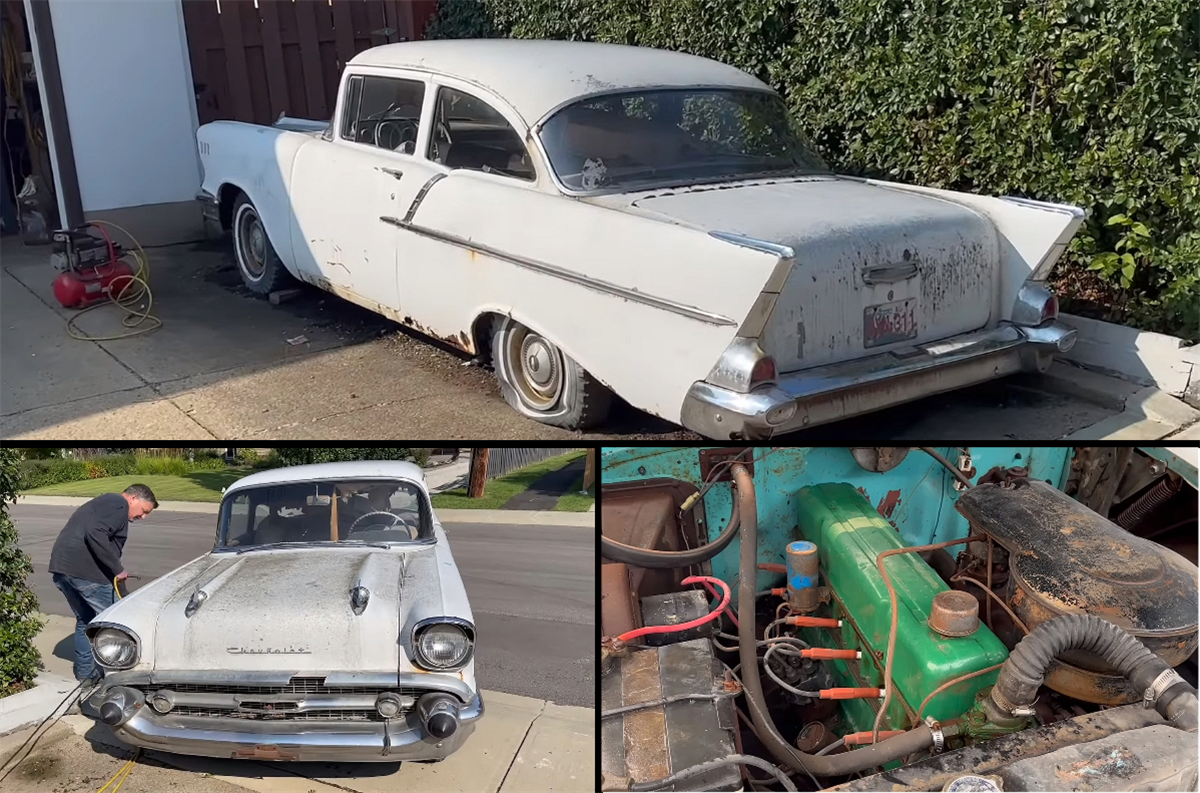The Chevrolet Tri-Five, which debuted in 1955 and sold nearly five million cars over three model years, was an immediate success. Why was it so well-liked? The better question is “What didn’t?” since the Tri-Five had everything.
Regardless of the model year, it was attractive, reasonably priced, and Chevrolet offered a variety of body types. And I’m not simply referring to four-door sedans, four-door wagons, and two-door coupes. The Tri-Five was additionally offered as a convertible, two-door grocery getter, and even a delivery sedan with a rear-seat deletion. It was also plenty powerful for the era. While the entry-level 235-cubic-inch inline-six came with 123 to 140 horsepower on tap, the V8 options delivered 162 to 283 horses depending on model year and trim.
The Tri-Five series had all three trim options that were previously offered with the Deluxe range. The lineup consisted of the base 150 (One-Fifty), the middle-of-the-road 210 (Two-Ten), and the top-of-the-line Bel Air. The latter featured an upscale interior and distinctive chrome exterior ornamentation.

The Tri-Five is a well-liked option among fans of vintage cars and is undoubtedly the most recognizable 1950s classic more than 60 years later. Even though the vehicle is not unusual, specialized variants are fetching over $100,000 at auction. Although the base 150 isn’t one of them, fans continue to store these vehicles for repair. One of the fortunate ones is the white example you can see here.
Rescued by YouTube’s “Curiosity Incorporated,” this 1957 150 may not be as fancy as a Bel Air, but it’s one of those unrestored and unmolested survivors you don’t get to see every day. Because most 150s are rotting away in junkyards and barns, unrestored survivors are pretty rare. Especially if we’re talking about examples that are still in one piece.
This one is far from perfect, but that’s because it has been sitting in front of someone’s house since 1984. Yup, this Tri-Five hasn’t been moved in a whopping 39 years. Why was it parked and neglected? Well, the owner stopped driving the car following a crash that inflicted a serious bend in the left-side rear fender. And he never got around to fixing it.
Nearly 40 years have passed, and the 150 now has many more problems. The tires hardly retain air, the lower body panels are rusted, and some parts are moldy. However, considering that it has been resting for so long, the car is in surprisingly decent condition. Oh, and did I also mention that the same family has owned it since it was brand new?

The Tri-Five is also quite original and complete; the only change made before the two-door sedan was parked was the paint. This particular car was painted in turquoise, one of the 1950s’ most popular hues, when it left the factory. The 150 has been painted white again, but behind the coating put on in the early 1980s, the previous color is still discernible.
Will this Tri-Five get a much-deserved restoration? Our host did not confirm this would be the plan, but he gave the car a proper cleaning and, more importantly, got the old Blue Flame inline-six engine running again. And that’s great news for a vehicle that could’ve become a rust bucket.
